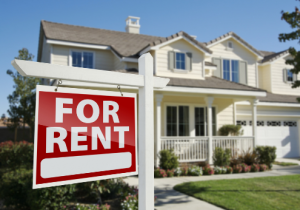Single-Family Homes Built for Rent Reach Record High
Single-Family Homes Built for Rent Reach Record High, Homeownership Rates Decline.
November 2021
Blog
The number of construction starts for single-family homes built-for-rent (SFBFR) reached its highest quarterly volume on record during the third quarter of 2021 (Deitz). Covid-19 has reshaped the way many of us think about where we live, work and play. It’s also fanned the flames of an already hot housing market accelerating the interest in single- family homes for rent. Single-family homes built to rent is the fastest growing segment of the American housing market thanks to skyrocketing home prices, stagnant earning potential, high student loan debt, tighter credit standards, and little in the way of savings (Kamen). Many Millennials, working class people, and a growing share of moderate- and middle-income Americans simply can’t afford to purchase a home in today’s real estate climate. As a result, builders and investors are capitalizing on the trend and renovating homes or building specs in hot areas. In some instances, investors are building new for-rent master-planned communities altogether.
According to the NAHB, 47,000 single family rental homes began construction over the last four quarters, a 17.5% gain compared to the 40,000 estimated. And the number of built-to-rent homes — single-family homes constructed expressly for the purpose of renting — increased 30 percent from 2019 to 2020 representing about 6% of the market (Kamen). It’s important to note that the estimates above don’t even include homes that are sold to a 3rd party to use as rental units. The NAHB estimates these rental homes represent another 3-4% of single-family construction starts bringing the new construction market share for single-family rental homes to almost 10%. That percentage is expected to double in the next ten years (Kamen).
The share of built-for-rent homes increased in the years after the Great Recession when investors recognized an opportunity to rent homes at a time when homeownership rates began to decline. Covid-19 has accelerated the investment in single family rentals to warp speed. Today 35% of U.S. rentals are single-family homes. And as more households seek lower density single- family neighborhoods amid concerns of a raging pandemic and the emergence of remote working and schooling, a growing number will have to rent to do so. The lack of inventory and affordability has sidelined many would-be single- family buyers.
recognized an opportunity to rent homes at a time when homeownership rates began to decline. Covid-19 has accelerated the investment in single family rentals to warp speed. Today 35% of U.S. rentals are single-family homes. And as more households seek lower density single- family neighborhoods amid concerns of a raging pandemic and the emergence of remote working and schooling, a growing number will have to rent to do so. The lack of inventory and affordability has sidelined many would-be single- family buyers.
While SFBFR homes are a way to add inventory amid concerns over housing affordability, it comes at the cost of fewer homeownership opportunities. Currently, only 37% of Americans under the age of 35 own a home (Kamen). That number is even lower for low- and moderate-income individuals and families and people of color. And the rate of homeownership is expected to decline further. By 2040 the Urban Institute predicts that homeownership rates across all demographics will fall by three percent. That’s 3.3 million fewer homeowners, or 3.3 million more renters who are not tapping into the wealth-building potential of homeownership. The numbers are even more staggering for Black Americans—a 12.4% decline in homeownership (Goodman and Zhu). The implications for wealth building among all races and ethnicities are problematic, but most dramatically for BIPOC Americans.
So how do we ‘build back better?’ Our specific focus at GROWTH is to expand the inventory of affordable homes by building new or renovating existing homes primarily in LMI census tracts. In tandem, we work with local municipalities to provide subsidies that offset construction costs and appraisal gaps; we also work with local banks and organizations to provide access to credit and capital in the form of down payment assistance and diverse financing options and buyer assistance. Homeownership is a key factor in building generational wealth and bridging the yawning racial wealth gap. Now more than ever, we have the capability to create a future for homeownership that is more equitable and inclusive. Learn how you can get involved here.
For more information on GROWTH and our community or property locations visit us here. Click the links for information on housing counseling and workforce development. And for more information on community development financing, click here.
Works Cited:
Dietz, Robert. “Single-Family Built-for-Rent: Best Quarter on Record: Eye on Housing.” Eye On Housing | National Association of Home Builders Discusses Economics and Housing Policy, National Association of Homebuilders, 17 Nov. 2021, https://eyeonhousing.org/2021/11/single-family-built-for-rent-best-quarter-on-record/.
Goodman, Laurie, and Jun Zhu. “By 2040, the US Will Experience Modest Homeownership Declines. but for Black Households, the Impact Will Be Dramatic.” Urban Institute, 21 Jan. 2021, https://www.urban.org/urban-wire/2040-us-will-experience-modest-homeownership-declines-black-households-impact-will-be-dramatic.
Kamin, Debra. “The Market for Single-Family Rentals Grows as Homeownership Wanes.” The New York Times, The New York Times, 22 Oct. 2021, https://www.nytimes.com/2021/10/22/realestate/single-family-rentals.html.
